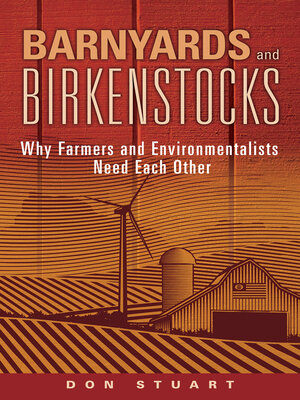
Sign up to save your library
With an OverDrive account, you can save your favorite libraries for at-a-glance information about availability. Find out more about OverDrive accounts.
Find this title in Libby, the library reading app by OverDrive.



Search for a digital library with this title
Title found at these libraries:
| Library Name | Distance |
|---|---|
| Loading... |
Rural America is struggling. The average farmer is now 57 years old. Family agriculture is gradually fading, and prime farmland is often converted into environmentally harmful applications. But food cultivation has ecological consequences, too. Farms consume 80 percent of the nation's water. Although they often prevent sprawling development, improve water quality, or provide wildlife habitat, they also pollute rivers, drain wetlands, or emit destructive greenhouse gasses.
Don Stuart believes two dangerous trends—the loss of farms and damage to ecosystems—are connected, and that a major cause is the political deadlock between farmers and environmental activists. He offers a radical proposal: collaboration. To promote empathy and point out the costs of continued political impasse, he presents opposing perspectives. Topics include incentives, regulations, government spending, environmental markets, growth management, climate change, public lands grazing, and the federal farm bill. Drawing from multiple case studies and a lifetime spent settling conflicts, the author identifies characteristics of successful community programs to suggest a model for a prosperous, healthy future.
|Rural America is struggling. The average farmer is now 57 years old. Family agriculture is gradually fading, and prime farmland is often converted into environmentally harmful applications. But food cultivation has ecological consequences, too. Farms consume 80 percent of the nation's water. Although they often prevent sprawling development, improve water quality, or provide wildlife habitat, they also pollute rivers, drain wetlands, or emit destructive greenhouse gasses.
Don Stuart believes two dangerous trends—the loss of farms and damage to ecosystems—are connected, and that a major cause is the political deadlock between farmers and environmental activists. He offers a radical proposal: collaboration. To promote empathy and point out the costs of continued political impasse, he presents opposing perspectives. Topics include incentives, regulations, government spending, environmental markets, growth management, climate change, public lands grazing, and the federal farm bill. Drawing from multiple case studies and a lifetime spent settling conflicts, the author identifies characteristics of successful community programs to suggest a model for a prosperous, healthy future.







